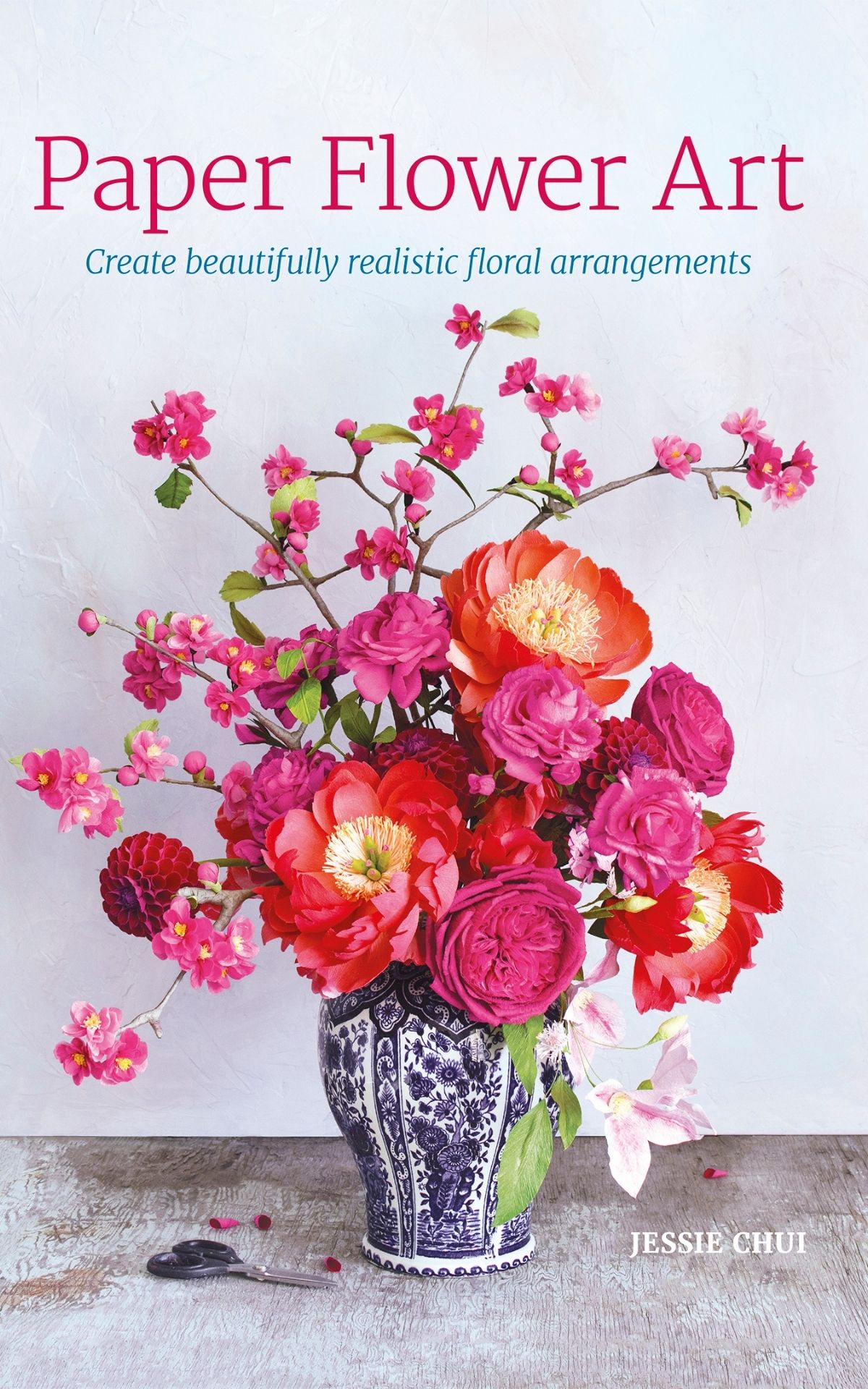Learn Basic Paper Flower Techniques with Jessie Chui of Crafted to Bloom
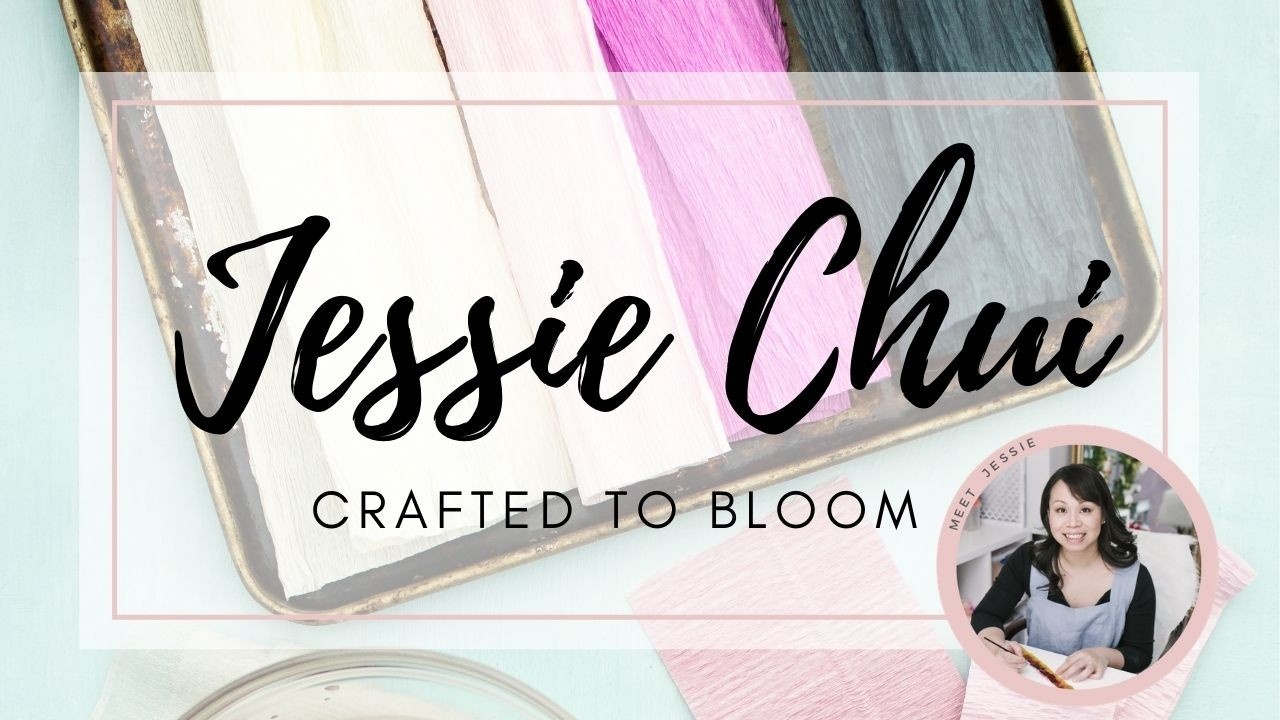
Please welcome, Jessie Chui of Crafted to Bloom. She is my guest blogger for this month!
Jessie Chui is a self-taught artist, educator, entrepreneur, lawyer, the author of Paper Flower Art, Create Beautifully Realistic Floral Arrangements (GMC Publications, 2019) and co-founder of Paper Talk, Paper Flower Education, and the Paper Talk Podcast. After a 7-year legal career, she shifted her focus to raise her son and pursue her creativity. Her paper floral art quickly drew the attention of The Paper Place a retail paper store in Toronto, Ontario, and she began to teach workshops there. With this encouragement, she formally established her art studio Crafted to Bloom in 2016. Her work has been featured on 100 Layer Cake, Green Wedding Shoes, Lia Griffith’s Artist Interview Series, WedLuxe, Holt Renfrew’s Holiday Magazine, Breathe Magazine, and the Botanical Brouhaha podcast, to name a few. In addition to making paper florals on commission, she offers paper flower workshops in private and group settings as well as online paper flower courses. She and her partner, Quynh Nguyen of Pink and Posey, offer education and mentorship through their businesses, Paper Talk and Paper Flower Education, and a weekly podcast called Paper Talk. Jessie resides in Mississauga, Ontario, Canada with her husband, 4-year old, and toddler.

Making paper flowers is not an easy feat. It takes a lot of time, experience, and dedication.
But here’s the good news: you can be a paper florist. Yes, YOU! The person reading this.
When making paper flowers, there are many parts that go into their creation. You can learn those parts, though! You can understand the anatomy of real flowers. You can practice being creative in how you form that flower out of paper. You can learn to color and manipulate paper like a pro.
To get you started, you need some knowledge about the different techniques paper florists use. Here are a few basic techniques to help you make your perfect paper flower. 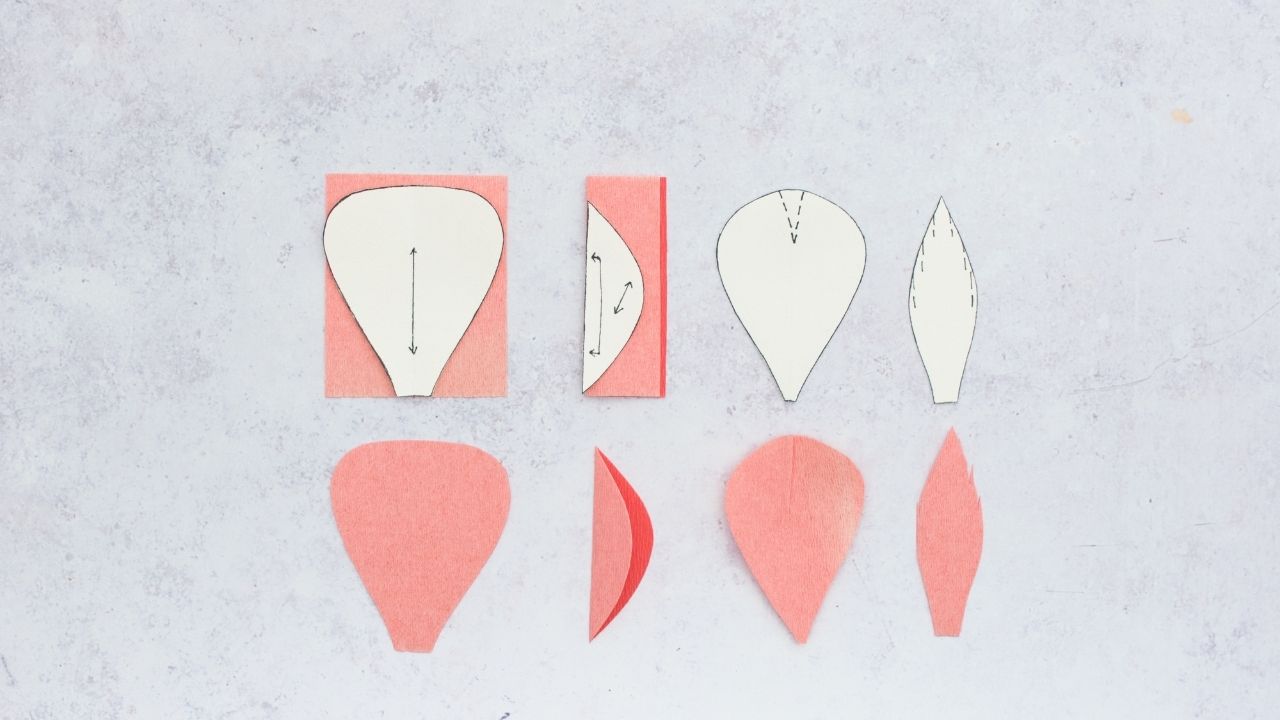
Reading a Template
Reading a template is crucial when learning to make paper flowers. They are a guide or roadmap that will help you avoid mistakes that could impact your final product—if you know how to use the template correctly.
It’s not bad to make mistakes. You will mess up when you’re first using templates. Mistakes help us gain experience and do better the next time!
To help avoid some of those pitfalls, though, here’s what the different markings on templates mean. Keep in mind that different educators may use slightly different symbols, but they generally communicate the same thing:
- Dotted line
A dotted line often indicates where you should crease or sometimes cut the leaf or petal. You can use the template by placing it directly on top of the crepe paper, and then folding or cutting the entire bundle together. Or if you are a bit more experienced, you can use the template as a visual guide.
- Double-ended arrows, single-ended arrows, or triple lines
These arrows or lines indicate the direction of the grain line on a petal or leaf. Line up the arrows or lines on the template with the direction of the crepe’s grain line to use it properly.
- Place on fold
To correctly use the template, you would line up the template marking with the folded side of the crepe paper. 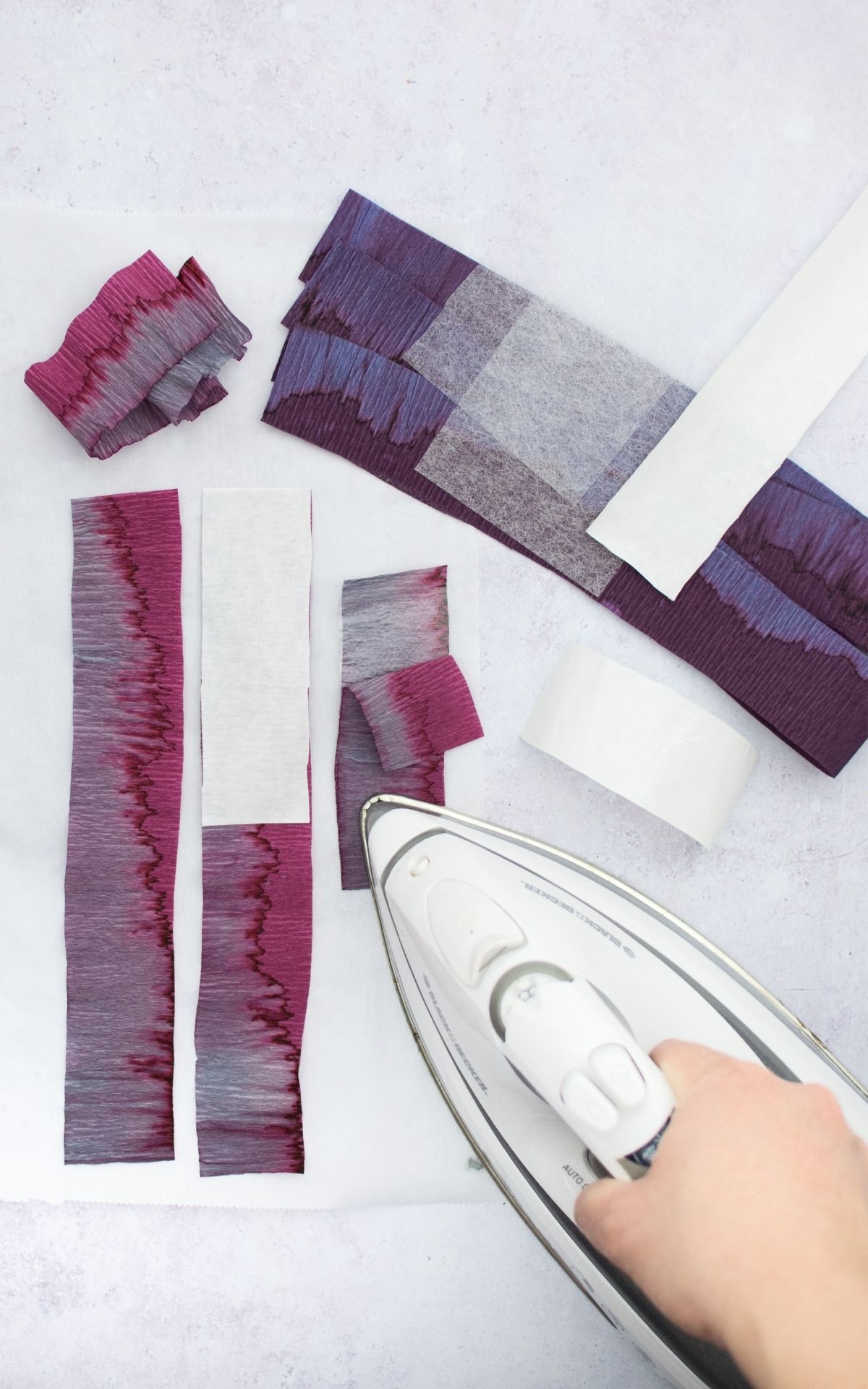
Laminating Crepe Paper
Laminating is when you glue crepe paper together to create a double-layer. This technique is used for several reasons. It can create paper with two differently colored sides, and it increases the strength of the crepe paper. Both useful results that can be used as creatively as you can imagine.
You can use a glue stick or tacky glue to laminate the crepe paper. First, stretch out the grain lines for heavy crepe paper. For finer crepe paper, you should just leave it as is. Then apply the glue, evenly spreading it out, to just one side of the paper. Align the grain lines to place the second strip of paper on top, and smooth out any bubbles.
If you want to try something besides glue, there’s also other methods such as iron-on fusible webbing and adhesive sprays.
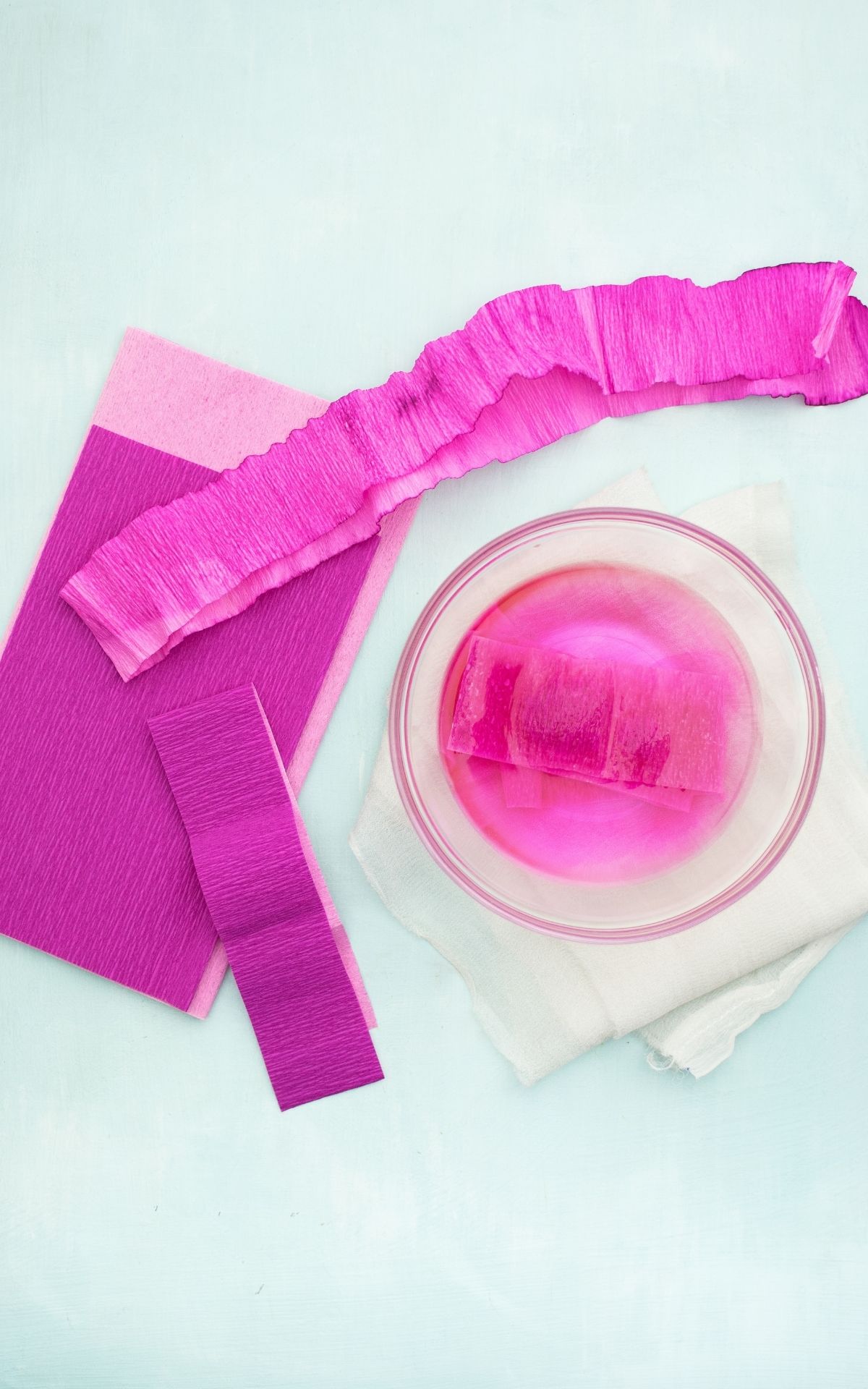 Water Washing and Dipping
Water Washing and Dipping
Water washing and dipping are coloring techniques—more basic processes, but essential nonetheless! They have different effects on different types of crepe paper, so the results won’t always be the same. That’s exciting! It means that you should explore and experiment with these techniques.
- Water washing
Water washing removes the machine lines from Italian crepe paper, specifically the 180g paper. To water wash, dip the rolled crepe paper into warm or hot water. Soak the crepe paper for a little while, and then hang it to dry.
Some florists put their paper in microwaves or ovens to speed up the drying process. If you try this, use short increments of time and keep a close eye on your paper!
- Water dipping
Water dipping makes the colors of the crepe paper bleed. This allows for beautiful color variation in petals or leaves. To water dip, cut the paper into manageable strips and wrap it around your finger. Then dip it in water for a couple of seconds, carefully unwrap it, and let it dry.
 Cupping
Cupping
Cupping is a paper manipulation technique. It’s used to create a concave shape. Think about how a leaf gently curves back. You can recreate that shape by cupping your crepe!
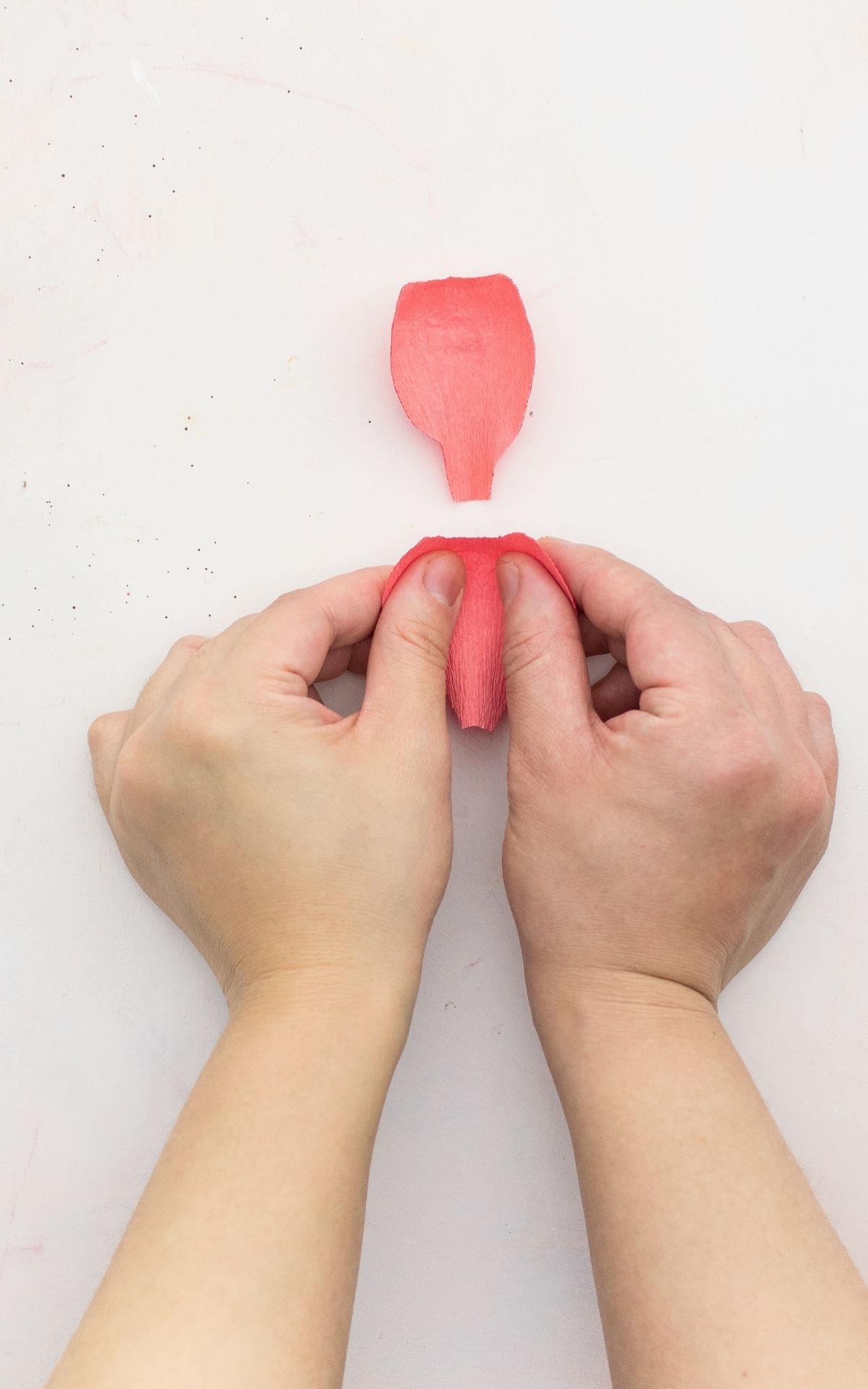
To cup, place both of your thumbs and forefingers on either side of the paper, grain lines running vertically. Then pull your fingers outward while your thumbs press toward the center. Make sure you stop before you reach the edges to avoid overstretching.
You might have to practice cupping a bit to get the feel for it, but it will become second nature before you know it.
And that’s it! Sure, there are other techniques out there to learn, but these are some of the basic building blocks of our craft. Master these and you’ll be on your way to creating beautiful paper flowers in a snap.

Jessie’s book, Paper Flower Art (GMC Publications) is available at all major book retailers or order online on Amazon.com. For international shipping outside of Canada, US, or UK, you can order from Book Depository.


50% Complete
Two Step
Lorem ipsum dolor sit amet, consectetur adipiscing elit, sed do eiusmod tempor incididunt ut labore et dolore magna aliqua.

